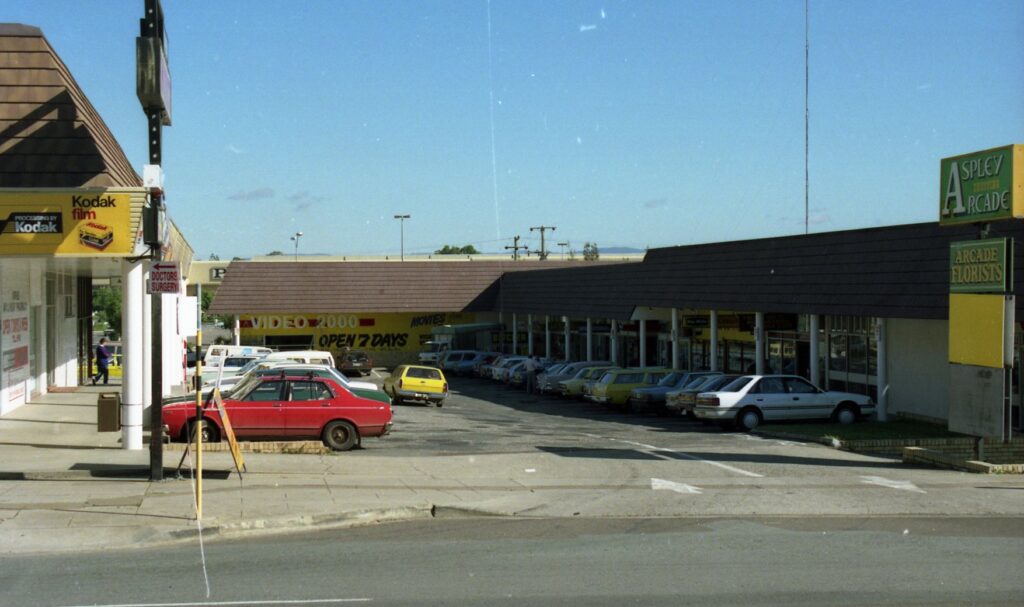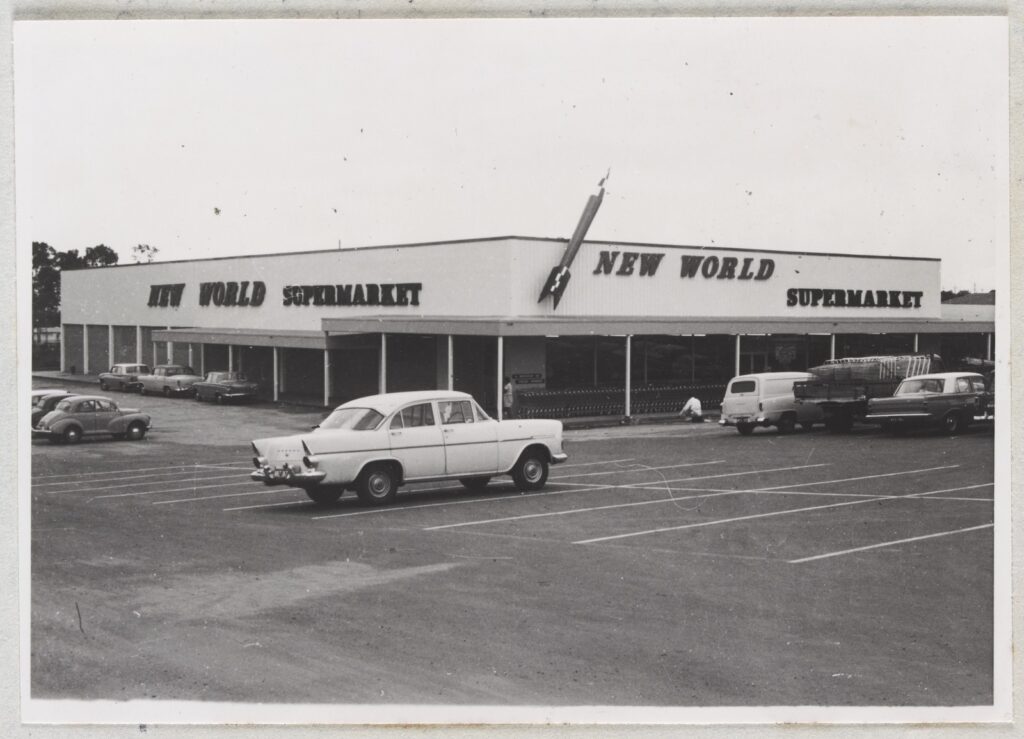Chermside & Districts Historical Society
Aspley
Originally written by Pat O’Shea, 2010. Updated by Sherry Mackay, Julia van Zon, Bradley Scott, 2023.
The history of Aspley
The suburb of Aspley is about 10 kilometres from the centre of the city of Brisbane. It is bisected by the major arterial road, Gympie Road, leading to the North Coast. The suburb was previously known as Little Cabbage Tree Creek, after the creek that rises in the McDowall area and empties into Moreton Bay. The other creek in the area is Cabbage Tree Creek.
Before farmers arrived in the mid-1800s, Indigenous Australians (the Turrbal people) travelled through the area and found plentiful food supplies in the creeks and nearby areas. Wildlife was attracted to the watercourses and there were enough trees and undergrowth to provide shelter for the people.
Some of the early land buyers were William John Ward, Judge Lutwyche, John, Henry and Samuel Raynbird and Henry St John Bridgeman. Most of these men bought large blocks of land for investment purposes and farmers later bought subdivisions of these properties.
In 1865, John Morris bought land at the sale held after Edgar Huxtable’s survey of 1864. He bought more land the following year and began his farming and association with the district. He named his property Aspley Grove, after Aspley Hall in Nottingham, England. The Morris family had lived in that area for many years and there was probably a trace of homesickness in giving that name to their new property.
Aspley’s demographics – population 12871 in 2021, an increase of only 277 people over the previous decade. With only 21 apartments in the suburb, Aspley will likely see an explosion in its population over the next 20 years.
Aspley has a remarkably flat age curve, with over 18% of residents being aged over 70.

Back in the day when you hired VHS movies from Video 2000 and had your films processed by Kodak. The Aspley Shops, c. 1988.

The New World Supermarket on Robinson Road. Opened in 1966, this version of Coles was inspired to deliver, “tomorrow’s shops, today!”.
Aspley's farmers


Berner’s farm in the 1950s.
John Jr. and Alfred Morris grew grapes and used them in their winery, Aspley Vineyard which operated from the 1870s to the 1890s on the southern side of what is now Darwin Street.
Farmers in the area grew small crops, fruit and vegetables for the growing Brisbane market. There were also dairies and piggeries. It was still a farming area until the 1950s when land was subdivided for housing.
The Berner family had a farm at trouts Road, Aspley. They grew lettuce for the markets and vegetables for the family.
The farm was sold to Matt and Fay van Houten and then to the Cappello family.
Other farmers in the nearby area grew paw paws and one paddock had searchlights installed during the war.
Aspley Nursery
Aspley Nursery, known to many gardeners over the years as Percy’s, was situated between Maundrell Terrace and Gympie Road. It was originally on the western side of Maundrell Terrace and Sid and his family grew gerberas and tuberoses for the cut flower market. Most of their flowers went to Melbourne.
The land was sold for redevelopment and Percys moved their nursery across the road. There was no town water so Sid had to carry all the water until town water was connected several months later.
While he was building the new nursery, he found remains of stables. Older residents told him that stables in that area had been used by a coaching company.
The retail nursery closed in June 2004.

Aspley Nursery from Maundrell Tce entrance.
Aspley State School

Aspley State School in 1932.

Class photo in 1942 during the war when some children went to school only part-time as many teachers had enlisted for war service. Some children went to country schools when authorities were concerned about the threat of a Japanese invasion.
After much controversy, the government accepted the offer of William Brown to build the school on Maundrell Terrace and it became known as the Little Cabbage Tree Creek School.
It opened in 1890 with forty children enrolled. The first head teacher was Archibald Robert Wing who remained at the school until 1901.
The name of the school was changed to Aspley in 1897 in keeping with the change of name of the suburb to Aspley.
The school celebrated its centenary in 1990 and a committee from the P & C compiled a Centenary History.
Aspley Starlight Twin Drive-In
The Aspley Starlight Twin Drive-in opened on 31 January 1957 with Field 1 showing Hit the Deck with Debbie Reynolds. Field 2 (a second screen) opened on 31 August 1989 showing Dead Calm and Lethal Weapon 2. Both fields showed their last films on 23 February 2002 with From Hell and Shallow Hal.
The drive-in was very popular but competition from large new multiplex cinemas in local shopping centres decreased patronage.
The growing population in southeast Queensland meant that large blocks of land were attractive to developers and this area was projected to accommodate about 100 dwellings.
The first developer after the land was sold called the estate Aspley Keep. The advertisements invited prospective buyers to “imagine relaxing in a contemporary outdoor living environment” and to “imagine lush green parklands that overlook the natural beauty of Cabbage Tree Creek.”
House and land packages started at $340,000.

Aspley Drive-In Theatre showing projection room, cafeteria, and stands for… many of these had to be replaced as patrons drove away at the end of the screening and forgot to replace the radios.

First buildings at Aspley Keep.
Off to the diggings - Aspley State School 1972

Off to the Diggings down Horn Road, Aspley. A day that Grade 7 are likely to remember for the rest of their lives. Modern Education using the local environment.
Aspley State School, Year Seven 1972
By Tess Quilter
The early years of the 1970s saw a new approach in many areas of the Queensland curriculum. In the Social Studies syllabus for the primary years, there was a distinct change from the reliance on one Queensland Government set text to provide information, to the encouragement of a range of research-based and experiential activities. Along with this change in emphasis, a wider range of books on Australian history, literature and art became available both in the community and in school libraries.
Thus it came to pass that in the winter of 1972 a large contingent of Year Seven children from Aspley State School set out for the diggings. The area with its alluvial promise was the land below and to the east of the Aspley reservoir and was approached by climbing down a quite steep, rocky and virtually treeless section of the creek below.
In the days before the trek, teachers had established sites suitable for the pitching of tents, including the sly grog establishment. “Gold” was sprinkled in the water, along with some “Fool’s Gold – small painted rocks. Sly grog merchants were appointed and supplied with red cordial for their illegal trade. A horse from the nearby farm was employed by a schoolboy bush-ranger to raid the site. As the history of Eureka was to be part of this study of gold, children were issued with Miner’s Rights. They were required to carry these documents with them and to produce them when required. Officials were appointed to perform these inspections. The children were encouraged to think carefully about their supplies and urged to concentrate on the necessities, considering the time and distance involved. Hopefully, they would learn the importance of this from history and not from a difficult experience.
The journey began on Horn Road at the end of the bitumen just past the school boundary. Some with carts, some with wheelbarrows, many with “panning dishes” – some were authentic – all with tools, sturdy shoes, and some sun protection – the “miners” set out.
The nature of the terrain, the management of equipment and supplies, and the need to keep moving toward their goal provided some degree of insight into the challenges of an earlier time.
On arrival at the site near the creek, sections of land were chosen and claims were staked. Conflicting claims were settled by negotiation. Life on the diggings then began. For many, food and water were of more pressing initial interest than gold but the digging, sifting and panning soon began in earnest. “Fool’s Gold” brought discussion and disappointment, but “true” gold was exchanged for a coin of comparable size. The presence of the sly grog tent gradually became known as the word was passed around but many, much to their dismay, did not learn of its existence until follow-up discussions the next day. The arrival of bushrangers on the fringe of the settlement proved to be a distraction rather than a worry. A request to see a “Miner’s Right” was met with somewhat polite opposition.
On the trip back to school the loads were lighter and the track much easier. The challenges had been met and there was plenty to talk about.
Unlike the earlier prospectors, this experience of these Aspley children was a single day in their lives in a place very near to their home. This day had been a very short tour from their reality but hopefully their appreciation of times past had been enhanced with the development of a dash of empathy and resilience.
